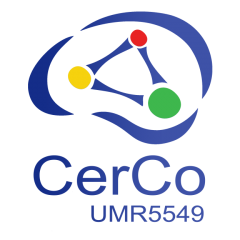Responsables: Timothée Masquelier
Notre nouvelle équipe incarne la pollinisation croisée entre les neurosciences et l’intelligence artificielle (IA).
– Nous utilisons des méthodes d’IA de pointe pour traiter efficacement les questions de neuroscience en suspens. Par exemple, des outils d’apprentissage en profondeur sont utilisés pour trouver des modèles dans de grandes quantités de données d’IRMf et d’EEG, et pour les relier aux stimuli, à la cognition, au comportement et au bien-être.
– Nous utilisons notre connaissance du cerveau pour concevoir des algorithmes d’IA améliorés et des architectures de réseaux neuronaux artificiels, par exemple en incorporant des pics, des rétroactions, des oscillations ou des représentations plus proches de l’homme.
Mots-clés
Intelligence artificielle, apprentissage machine, apprentissage profond, réseaux de neurones, neuroscience computationnelle, vision, audition, traitement du langage naturel.
Chercheurs
Andrea ALAMIA
Timothée MASQUELIER
Rufin VANRULLEN
Chercheur associé
Thomas SERRE
Ingénieurs
Sabine MUZELLEC
Leslie MARIE-LOUISE
Post-Doctorants
Bhavin CHOKSI
Benjamin DEVILLERS
Jacob SCHWENK
Xiaoqui XU
Doctorants
Mathieu CHALVIDAL
Javier CUADRADO
Colin DECOURT
Thomas FEL
Illyass HAMMOUAMRI
Isabelle HOXHA
Ismail KHALFAOUI-HASSANI
Pierre-Marie MATTA
Léoplod MAYTIE
Furkan OZCELIK
Romain PIERRE
Ulysse RANÇON
Zhaoyang PANG
Mohit VAISHNAV
Aimen ZERROUG
Publications Représentatives
- Pellegrini, T., Zimmer, R., and Masquelier, T. (2021). Low-activity supervised convolutional spiking neural networks applied to speech commands recognition. In IEEE Spoken Language Technology Workshop
- Brandmeyer, T., Delorme, A. (2020) Closed-Loop Frontal Midlineθ Neurofeedback: A Novel Approach for Training Focused-Attention Meditation. Frontiers in Human Neuroscience, 14, DOI=10.3389/fnhum.2020.00246.
- Brandmeyer, T., Delorme A. (2020) Meditation and the wandering mind: a theoretical account of underlying and converging neural mechanisms. Perspectives on Psychological Science, doi: 10.1177/1745691620917340.
- Choksi, B., Mozafari, M., Biggs O’May, C., Ador, B., Alamia, A. & VanRullen. R. (2020). Brain-inspired predictive coding dynamics improve the robustness of deep neural networks. In 2nd NeurIPS Workshop on Shared Visual Representations in Human and Machine Intelligence (SVRHM)
- Kheradpisheh, S. R. and Masquelier, T. (2020). Temporal backpropagation for spiking neural networks with one spike per neuron. International Journal of Neural Systems, 30(06):2050027
- Cannard, C., Brandmeyer, T., Wahbeh, H., Delorme, A. (2020) Self-health monitoring and wearable technologies. In Handbook of Clinical Neurology, Nick Ramsey and Jose Millan (Editors). Elsevier: Amsterdam.
- Mozafari, M., Ganjtabesh, M., Nowzari-Dalini, A., Thorpe, S. J., and Masquelier, T. (2019). Bio-inspired digit recognition using reward-modulated spike-timing-dependent plasticity in deep convolutional networks. Pattern Recognition, 94:87–95
- Alamia, A., & VanRullen, R. (2019). Alpha oscillations and traveling waves: Signatures of predictive coding?. PLoS Biology, 17(10), e3000487.
- VanRullen, R., & Reddy, L. (2019). Reconstructing faces from fMRI patterns using deep generative neural networks. Communications biology, 2(1), 1-10.
- Delorme, A., Majumdar, A., Sivagnanam, S., Martinez-Cancino, R., Yoshimoto, K., Makeig, S. “The Open EEGLAB Portal.” 9th International IEEE/EMBS Neural Engineering Conference, San Francisco, March 2019.
- Pernet, C., Appelhoff, S., Flandin, G., Phillips, C., Delorme, A., Oostenveld, R. (2019) BIDS-EEG: an extension to the Brain Imaging Data Structure(BIDS) Specification for electroencephalography. Scientific Data volume 6, Article number: 103. doi.org/10.1038/s41597-019-0104-8.
- Delorme A., Brandmeyer T. (2018) When the meditating mind wanders, Current Opinion in Psychology. DOI: 10.1016/j.copsyc.2018.12.006.
